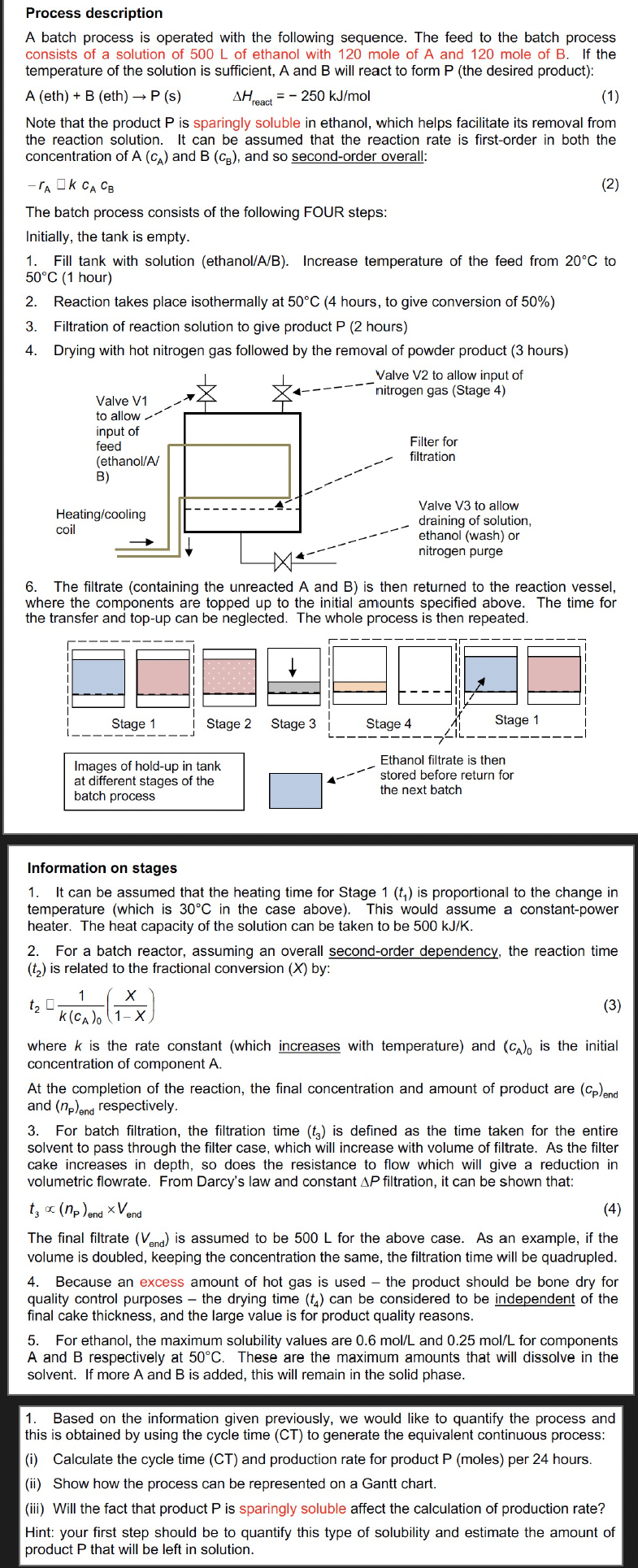Answered step by step
Verified Expert Solution
Question
1 Approved Answer
the reaction solution. It can be assumed that the reaction rate is first - order in both the concentration of A ( c A )
the reaction solution. It can be assumed that the reaction rate is firstorder in both the
concentration of and and so secondorder overall:
The batch process consists of the following FOUR steps:
Initially, the tank is empty.
Fill tank with solution ethanolAB Increase temperature of the feed from to
hour
Reaction takes place isothermally at hours, to give conversion of
Filtration of reaction solution to give product hours
Drying with hot nitrogen gas followed by the removal of powder product hours
Information on stages
It can be assumed that the heating time for Stage is proportional to the change in
temperature which is in the case above This would assume a constantpower
heater. The heat capacity of the solution can be taken to be
For a batch reactor, assuming an overall secondorder dependency, the reaction time
is related to the fractional conversion by:
where is the rate constant which increases with temperature and is the initial
concentration of component A
At the completion of the reaction, the final concentration and amount of product are
and respectively.
For batch filtration, the filtration time is defined as the time taken for the entire
solvent to pass through the filter case, which will increase with volume of filtrate. As the filter
cake increases in depth, so does the resistance to flow which will give a reduction in
volumetric flowrate. From Darcy's law and constant filtration, it can be shown that:
prop
The final filtrate is assumed to be for the above case. As an example, if the
volume is doubled, keeping the concentration the same, the filtration time will be quadrupled.
Because an excess amount of hot gas is used the product should be bone dry for
quality control purposes the drying time can be considered to be independent of the
final cake thickness, and the large value is for product quality reasons.
For ethanol, the maximum solubility values are and for components
A and respectively at These are the maximum amounts that will dissolve in the
solvent. If more A and is added, this will remain in the solid phase.
Based on the information given previously, we would like to quantify the process and
this is obtained by using the cycle time CT to generate the equivalent continuous process:
i Calculate the cycle time CT and production rate for product moles per hours.
ii Show how the process can be represented on a Gantt chart.
iii Will the fact that product is sparingly soluble affect the calculation of production rate?
Hint: your first step should be to quantify this type of solubility and estimate the amount of
product that will be left in solution.

Step by Step Solution
There are 3 Steps involved in it
Step: 1

Get Instant Access to Expert-Tailored Solutions
See step-by-step solutions with expert insights and AI powered tools for academic success
Step: 2

Step: 3

Ace Your Homework with AI
Get the answers you need in no time with our AI-driven, step-by-step assistance
Get Started


